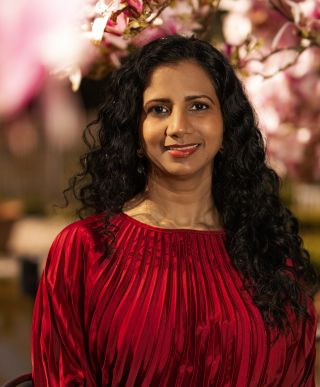Race and Ethnicity
Childhood Through the Lens of Colorism
Two anticolorist authors share how colorism shaped their childhoods.
Posted July 31, 2023 Reviewed by Gary Drevitch
Key points
- Colorism holds a silent but steady place in the formidable expectations of young South Asian girls.
- Within SA families, complexion is discussed even as early as a child's birth.
- Colorist remarks can act as microaggressions, infiltrating the self-esteem of a youngster.
“The rose resonated with me in more way than I can describe. It was different in its rosebush. I was different in my family. And people around me didn't hesitate to remind me. My complexion didn't match the rest of my family’s, that was undeniable. But was it such a punishable crime to be different from them. Like the rose, was this the real reason for my exclusion from my family? I couldn't help but wonder whether The Wicked Man was right, whether I was the black rose.” —from The Black Rose by Shweta Aggarwal
As first- and second-generation South Asian children of immigrants begin to grapple with identity in a new age of tech and globalism, it has become painstakingly clear that there are certain intergenerational scripts that should never have been permissible. As part and parcel of daily diasporic dialogue and ritual, the concept of colorism is a factor that holds a silent but steady place in the formidable expectations of young South Asian girls and women.
Colorism is a term coined by novelist Alice Walker in 1982. She defined it as “prejudicial or preferential treatment of same-race people based solely on their color."1 It is an ingroup type of discrimination that occurs in Black and Latinx communities, but also has had a strong presence in Asian and South Asian countries over several centuries. Millions of dollars are spent each year on face lightening in many parts of Asia, for individuals vying for whiter skin. But the main mode of passing on colorist beliefs is through families and close community members. South Asian youth are indoctrinated into the notion that those with fairer skin are considered more attractive, more interesting, and have greater prospects.
“My mom is always telling me to stay out of the sun because she’s so worried about me getting dark. I don’t want to get dark either, so I always wear a hat.” —Swathi, 17
More recently, as newer generations have begun to challenge negative scripts, the topic of colorism is gaining prominence among the South Asian community. I have seen in my own practice, family, and community how this has pervaded into the psyche of so many youths, impacting their self-confidence and self-esteem.

I recently interviewed Shweta Aggarwal, a UK-based anti-colorism activist and author of her true-life memoir The Black Rose: My Story of Colorism Silently Lived by Millions, and Mallika Thoppay, a California-based educator, social advocate, and author of the children’s book Unfair and Lovely, which chronicles the journey of young Sahana and her lighter-skinned sister Surabhi and highlights the differential treatment they face due to colorism.
Within SA families, complexion is discussed even as early as the birth of a child. One of the compliments a baby receives often has to do with color; if the baby was a fair girl, then she would be deemed beautiful. As a youngster, Mallika says she was bombarded with the idea that being fair was coveted and was always hearing “relatives inquiring about a newborn baby’s complexion."
Shweta’s first introduction to colorism was at age 6; she shares that it was quite traumatic: “When my fair-skinned parents enrolled me in a boarding school in India and moved to Japan to start a new business, I was told by an extended member of the family that my parents ‘left me behind because they were ashamed of my colour’ and that I didn’t belong to them.”
“Drinking milk will make you fair and beautiful just like Surabhi,” she said. Sahana’s face fell suddenly. She loved her grandma and sister, but it hurt her when her grandma said things like that. “I’ve been drinking milk all my life, and nothing has changed. Why doesn’t grandma like the way I look? What’s wrong with me being dark brown?” she wondered. —from Unfair and Lovely by Mallika Thoppay
Young children are sometimes made to feel that they have a problem just because of their skin color. Mallika talked about how it was “not uncommon for the darker siblings to be questioned as to what went wrong and why they ended up so dark.” Often children would be encouraged to drink milk, not only to be healthy and strong, but also for fairness, equating health with being lighter-skinned.
Mallika goes on to state that in her family, she and her siblings were often compared on the basis of complexion. “I found this to be true of most families where siblings are of different skin tones, with invariably the ones with darker skin getting the short end of the stick.”
Shweta describes an incident while visiting her family in Japan as a child. She and her mom would often visit Baskin-Robbins for ice cream. There was a lady in the parlor that had taken a liking to her mother and her baby brother. She spoke of how the woman would pay compliments to her fair-skinned mother and brother and intentionally ignore her.
Additionally, it is commonplace for extended family and community members to use humor as a way to project discomfort with color. In another instance, an Aunty came over to their house and was full of praise for her brother, asking in a joking manner how it was possible that her brother was so fair, and she was so dark and that they didn’t look like siblings. Her mother then responded in defense of Shweta by telling the woman that when she was born “I made the mistake of massaging her daily with mustard oil and then leaving her to bask in the sun. She wasn’t born dark.”
Mental Health Fallout
“I felt that because others didn’t see me, I stopped seeing myself” – Shweta Aggarwal
Isolation. Colorist remarks from parents or community members can act as microaggressions, infiltrating the self-esteem of a youngster. There is a feeling of being “othered” in your own family, which can be isolating and alienating. Shweta shares that as a child she “lived under constant fear of being separated from my parents because ‘I didn’t belong’. I suffered from separation anxiety even after I was united with my parents after 2.5 years and haunted by a regular nightmare for years after.”
She also was afraid that she was adopted and not truly part of her family. Taunts from her classmates didn’t help. She adds, “At some point, because the taunts were relentless, I started to believe that perhaps I didn’t actually belong, that I was an orphan who was adopted.”
Suppression and Avoidance. “I dread going to community gatherings when I'm back home from college. There’s always someone who mentions how dark I’ve become.” —Rima, 21
Mallika describes how some girls receiving such unsolicited feedback “would just smile and pretend to have brushed off the comments even though they were probably burning inside. Some would shrug their shoulders implying they didn’t really know how to respond. Others would alienate themselves from being in social situations, to avoid being subject to negative remarks.”
%20(1).jpg?itok=cM-Mp6La)
Approval-seeking. Shweta shares that she was so distraught by her dark skin, she began to use lightening creams at a young age in the hopes of finally gaining the societal approval that she desperately wanted but was often denied due to her complexion.
Also, in order to get parental approval and “to compensate” for her color, she made sure to be very obedient and stay on top of her academics.
Lowered Confidence. Some girls may feel less confident to pursue their interests or pursuits, as they feel they are either “not good enough” or that their goals are unattainable. Shweta ,who always loved to dance and wanted to join the Indian cinema world of Bollywood, was told that she was too dark to be an actress. She realized her dark skin was a disadvantage. “I hid all my insecurities behind the facade of an ebullient personality. I never had the confidence to tell myself that I am beautiful, too. I started to see lighter-skinned women implicitly as more beautiful. I never bothered with pursuing a career in Bollywood even though I was a talented dancer and was keen to learn acting.”
Advocacy through Authorship
“Go on your unlearning journey gently.” – Shweta Aggarwal
With the hope of beginning to eradicate this issue, Mallika decided to write her children’s book, Unfair and Lovely, to educate young children and their families about this issue. Mallika also conducts presentations at schools, in book clubs, and on podcasts to raise awareness about the toxic impact of colorism.
“The BLM movement in 2020 became the catalyst for penning my story,” Shweta shares, and is the center of her anti-colorism work. She remembers the intense guilt over her own hypocrisy in standing alongside the Black community against racism, all the while using skin whitening products.
Her book, The Black Rose, is a brutally raw and honest story which aims to heal other victims of colorism, educate about its detrimental impact on self-esteem, and empower people to celebrate their melanin.
It is the hope of these authors that by owning one’s colorism, sharing stories with children about diverse characters, celebrating all skin tones, and seeking guidance from anti-colorism activists, SA parents can help reduce colorism within their own families and for future generations.
References
Kimberly Jade Norwood, "If You Is White, You’s Alright. . . .” Stories About Colorism in America, 14 Wash. U. Global Stud. L. Rev. 585 (2015),




